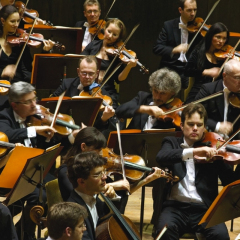
Karl Forster
地区:德国
生日:1874-09-03(处女座)
经纪公司:
Karl Foerster was born in Berlin, Germany on September 3, 1874. His father was the royal director Wilhelm Foerster and his mother the painter Ina Foer
Karl Foerster was born in Berlin, Germany on September 3, 1874. His father was the royal director Wilhelm Foerster and his mother the painter Ina Foerster. He further had two brothers and two sisters. He studied as a gardener apprentice in Schwerin from 1889-1991. From 1892 till 1903 he visited the "Gaertnerlehranstalt Wildpark bei Potsdam" (Gardening academy) and studied under the plant breeder and landscape architect Ludwig Winter in Bordighera on the Italian Riviera. Here his lifelong passion for both photography and all aspects of perennial plants began. In 1903 he started to revive his parents plant nursery in Berlin-Westend with the goal to simplify the vast and chaotic assortment of available plant material and select a limited number for maximum beauty, resilience and endurance.
The first Foerster catalog was published in 1907 and in 1909 his article on cold hardy Japanese Chrysanthemums for dry gardens was printed in a horticultural magazine ("Der praktische Ratgeber für Obst- und Gartenbau"). With the relocation of his nursery from Berlin to Potsdam, he transformed 5000 square meter agricultural land into a famous gardening paradise, and employment at his nursery was considered a prestige.
His first public lecture on cold hardy perennials in 1910 set the stage for his life long devotion to public education. In 1916, he was instructed with designing and implementing a landscape around the royal castle "Cecilienhof". After he returned home from his service in World War I in 1917, his book "Vom Bluetengarten der Zukunft" ( "from the blooming garden of the future") becomes published. In 1920, he successfully bred Delphinium elatum ‘Berghimmel’.
Together with the landscape architects Hermann Mattern and Herta Hammerbacher he formed the working alliance "Gartengestaltung Bornim" in 1927 and together they transformed his hometown Bornim into a Mecca for gardening enthusiasts. In 1933, his collegue Heinz Hagemann returned from his Bohemian home town with the cultivar Rudbeckia sullivantii ‘Goldsturm’, which then is named and propagated in Foersters nursery.
During the Nazi era, Foerster took the risk and employed numerous Jewish friends in his operation and resisted the Nazi demand to primarily propagate and sell native German, pure plants. After the war, the soviet military administration puts claim on Foersters nursery , which was now managed under tight Soviet rule and remained the only perennial supplier for East Germany.
In addition to his lectures, writings and plant breeding, Foerster also initiated the show gardens in Bern, Switzerland and Riga, Lettland, as well as demonstration gardens in Bavaria, Hannover and Hamburg before the end of World War II. In 1950, he receives an honorary doctorate degree from the Humboldt University in East Berlin.
Karl Foerster died on November 27, 1970 at the age of 96 in his home in Bornim.
The Perennial Plant Association has awarded the title of Perennial Plant of the Year 2001 to Calamagrostis xacutiflora 'Karl Foerster'.














